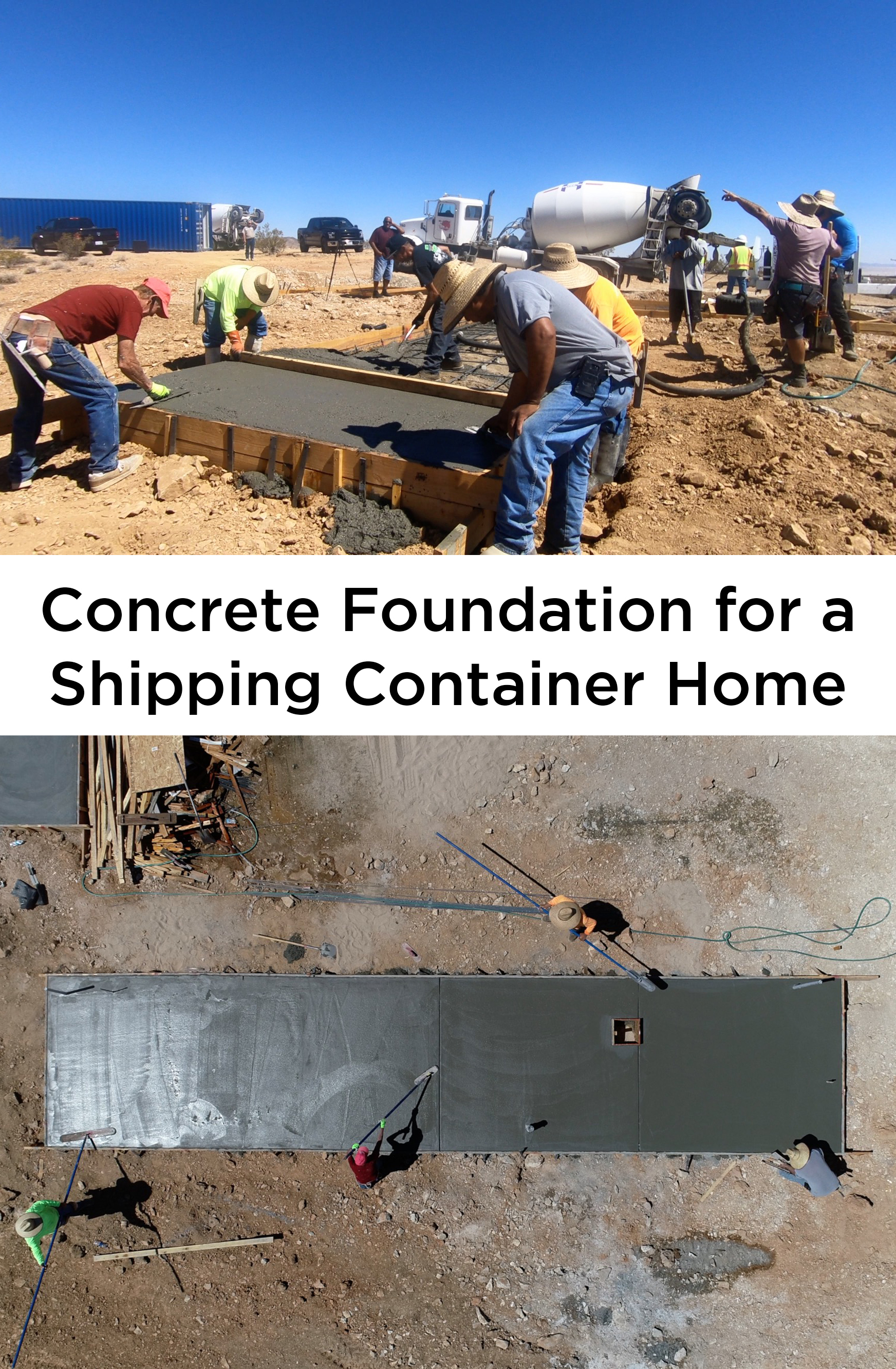In Episode 1 we will go over the basic considerations for buying shipping containers, explain how we got building permits for a shipping container house and show how we constructed the concrete foundations.
Buying the land:
Buying raw empty land without buildings on it is different than buying a house. It’s more difficult to secure financing for land. I paid cash for this 10-acre lot. It was listed for around $24,000 and I offered $20,000. I checked to make sure it was close to water and electrical utilities before completing the deal. I asked the seller if they had commissioned a survey of the property in the last 10 years and when they said no I explained that I would be offering less than the asking price.
Survey:
The first thing I did was to commission a surveying firm. I emailed several local firms and asked for a quote for a full topographical survey and plot plan with all building setbacks shown. The building setbacks are key because they tell me where I can place the house. I want the house to be somewhat close to the boundaries of the property to reduce the need for building a long drive and to reduce the cost of connecting utilities. The survey cost me $4000
Buying the Shipping Containers:
We purchased one trip condition hi-cube containers. California requires that shipping containers used for homes have documentation showing that have not had toxic or radioactive materials in them. This normally means that you need one trip condition containers with appropriate certificates. I bought my containers from Container Discounts and paid $4800 each for the 40-foot hi-cube containers and $3250 for the 20-foot hi-cube container. Hi-cube containers are a foot taller than typical shipping containers. If you are interested in learning how to buy a shipping container i strongly recommend calling Container Discounts. They are very knowledgeable and have good prices.
I bought two 40-foot High Cube Containers and one 20-foot high cube container from Container Discounts
Permits:
I recommend going in person to the local building department showing them the survey and asking them for a checklist of everything that needs to be completed to get building permits. The survey is important because it shows the building dept. both the physical nature of the property and documents its legal boundaries and history. I explained that I wanted to build a shipping container house and asked for a complete checklist of everything I would need to get done and submit in order to get building permits. Getting building permits is a little bit different in each county. My property was under San Bernadino County’s jurisdiction.
Architectural Design
I used the architecture firm I co-founded, ZeroEnergy Design, to produce the architectural drawings. Even though I am a co-owner I made sure to pay the firm for the hours of preparation that this task would take. It would be unfair to my partners if I used firm resources for my own personal project. I paid $5000 for the creation of the architectural drawings. I didn’t need a lot of detail in the drawing set since i was planning on building a lot of it myself. I just needed a construction drawing set that would get me through permitting.
Structural Engineering
I sent the architectural drawings over to the structural engineering firm I hired, and they created the structural details and created a package of calculations showing that these details would meet all code requirements and result in a safe and strong building. This package of drawings and calculations was required by the building dept. My architecture firm primarily practices on the east coast and does not have a stamp in California so I had the structural engineering firm stamp the drawings. The building dept. gave me the option of having either the architecture firm or the engineering firm stamp the documents.
Hiring a general contractor
I am new to the Joshua tree area, so I hired a general contractor to help me with the project and recommend local specialty trades people like plumbers and electricians. We agreed on a time and materials contract where I would pay advances every week based on what we expected to do. He would then provide receipts showing how the advance was used. This is a pay as you go system that is good for unconventional projects where the owner is involved. For straight forward normal construction I prefer a fixed price contract. With a project like this builders would tend to overbid on fixed price since there are so many unconventional parts.
Foundation design:
We ended up building a monolithic on slab on grade concrete foundation. We worked on designs for some piers that would have saved in material costs but then the space underneath the container would have been classified as a crawl space and the bottom of the container would have to be 18” off the ground at a minimum. This would mean I would have to build stairs and railing for all the decks.
Grading the site and excavating for the foundation
I rented a bulldozer and hired an operator to level a portion of the site where I wanted to place the house. I then rented a back hoe to dig out the footings for the foundation.
Building the forms
The forms were built out of 2x8s screwed to steel stakes that we hammered into the ground.
Building wood forms out of 2x8s for the foundation of a shipping container house.
Reinforcement
We used #4 rebar to reinforce the concrete. This was wired together to match the structural drawings.
Foundation forms ready for concrete
Concrete Day
Concrete day was pretty exciting. We had to pump the concrete to one of the foundation slabs because the truck couldn’t get close enough without driving over the other forms.




